Journal
Journal
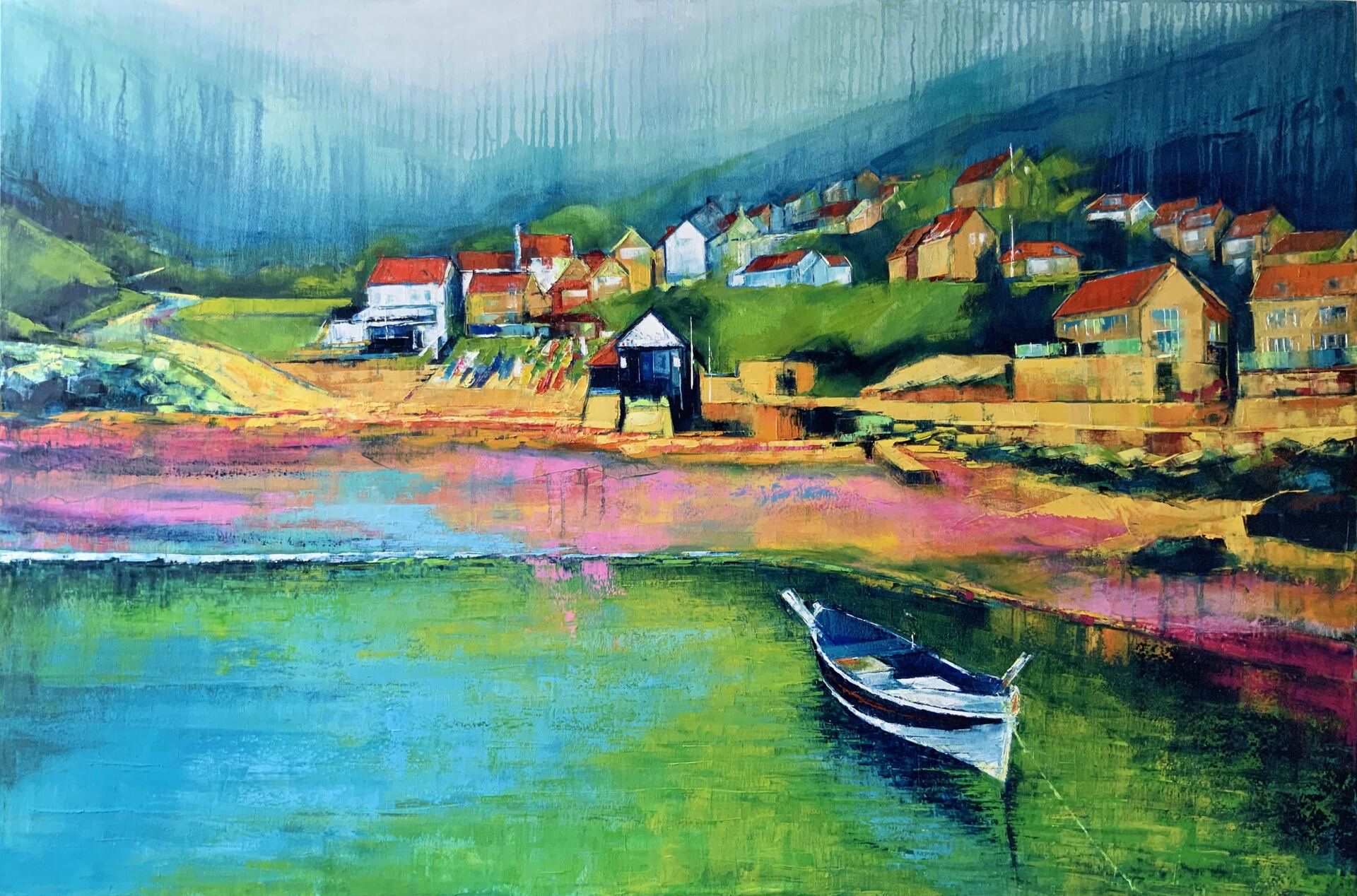
I was first introduced to Kate's work at Kunsthuis contemporary gallery in North Yorkshire, forming part of the exhibition "our eARTh" which explored responses from artists to the environment and climate change issues. I totally fell in love with her bold colours. Living by the coast has very much influenced Kate's artistic style, being drawn in by the rugged landscapes, extreme weather conditions and the Heritage of a working boat community. I chatted with Kate about her work and how it's progressed in the last couple of years. First up how did she get here? I was always obsessed with drawing and making as a child so I guess it was inevitable that I would follow an artistic route. I trained initially at university as a fine art sculptor and after gaining my degree I went on to study a PGCE in art education. After spending many years teaching art to A-level, I moved to Whitby with my husband and worked for the education department at the North York Moors National Park as an education leader. Having taken time out to have a family I continued to teach with adult Art classes, until in 2016 I decided to pick up a paintbrush for the first time in over 20yrs. Having never previously been a painter and always enjoyed three-dimensional form it took a while to get the hang of canvas and oil paint but at this point I was determined to at least give it a go. Better late than never. I asked Kate about her use of colour as it's one of the things I totally fell for in her work - Kate your paintings are super vibrant and evocative – is there a reason you choose to paint in such vibrant colours? When I first began painting with oils I was using a traditional palette. However I wanted to develop a more contemporary style and my love of colour was probably the first step in my experimentation. The colours that I use in my paintings are only really an exaggeration of the colours that I already see. And I use a lot of photography taken very early in the morning when the light source is at its brightest and the colours are at their most extreme. From then on I began to also develop an impasto style of paint application, using a palette knife and sculpting the paint onto the canvas. I guess that this was my homage to my sculpture training. At Kunsthuis and in your earlier work you featured more marine life (lobsters etc), have you made a conscious decision to move away from this to concentrate more on boats and local scenery – or do you think you’ll revisit the marine life again? Yes, initially I did begin with a lot of marine life in my paintings, concentrating specifically on lobsters, as my families love and participation of all things nautical was a big part of our life. However after a while I did make a conscious decision to concentrate on just one style. So I put all efforts into improving and developing what I felt was my stronger work, which was my boat and seascape paintings. One cohesive style is also far easier to share with galleries. With such a rugged landscape to work on do you work outdoors or work mostly from a home studio? How do you stay motivated and what do you find the most difficult in working from home? Currently my studio is situated in my home and I do find it very difficult to stay motivated at times. Right now it’s harder than ever to not be sidetracked by my two teenage children who have been at home from uni for the last few months. But what I do feel is important is to treat my studio time as if I was going out to any other job. When I’m painting, I'M PAINTING! Plus when I get into my painting zone I find that a whole day goes by in a flash. What about the process of how you design and make your paintings - do you plan what to make or just go with the moment? So, my paintings process begins with a photograph. I’ve been very fortunate to have a friend that takes beautiful, atmospheric photographs on his early morning walks and he allows me to use them as a reference for my pieces. When a particular scene appeals to me I run with it, so I suppose I do just go with the flow. You mention you used to tutor with adult groups – is this something you still do or would consider doing again? Teaching with adult groups is very rewarding and I’d like to think I’ll have the time to return to it one day. But right now I’m happy to concentrate on my painting career. What’s next on the agenda for you – what are your plans? where can we see you? I was recently working on a body of work for an exhibition for Art For Youth North which is an annual exhibition of contemporary Northern artists set in Thirsk. I have work on display in Silver Street Gallery, Whitby and have plans to send pieces to a couple of Galleries outside of the North. Do you have any specific artists that you really champion and would suggest any rising artists? There are a number of artists, both painters and sculptors who’s work inspire me. I love the work of Peter Wileman, his use of colour and his energetic mark making. His paintings really capture a sense of place. But I also admire the work of many of my local contemporaries such as, Ian Burke, Ian Burdall, Sue Nichols, Tori Tipton, Emerson Mayes and Richard Gray. Also sculptors and ceramicists like, KV blacksmith, Kit Hemsley, Hilary Holmes, Anna and the willow, Emmeline Butler and Eric and Chris Moss to name but a few. We have such a wonderful and varied array of talented artists here on our own doorstep. and finally do you have any advice to creatives and artists about to embark on starting their own business? My advice to anyone about to embark on an artistic career is firstly don’t make things complicated, make sure you are enjoying what you’re doing. But also take advice from those that have been where you are. Or as I did, apply to a show like art& where they run a Raw Talent Award Scheme offering invaluable support and guidance into exhibiting your work professionally. Theres lots of help and information out there if you’re prepared to look for it. See more of Kate's work or contact her via her website https://www.katesmithart.co.uk/ or follow her on Instagram at @art_katesmith
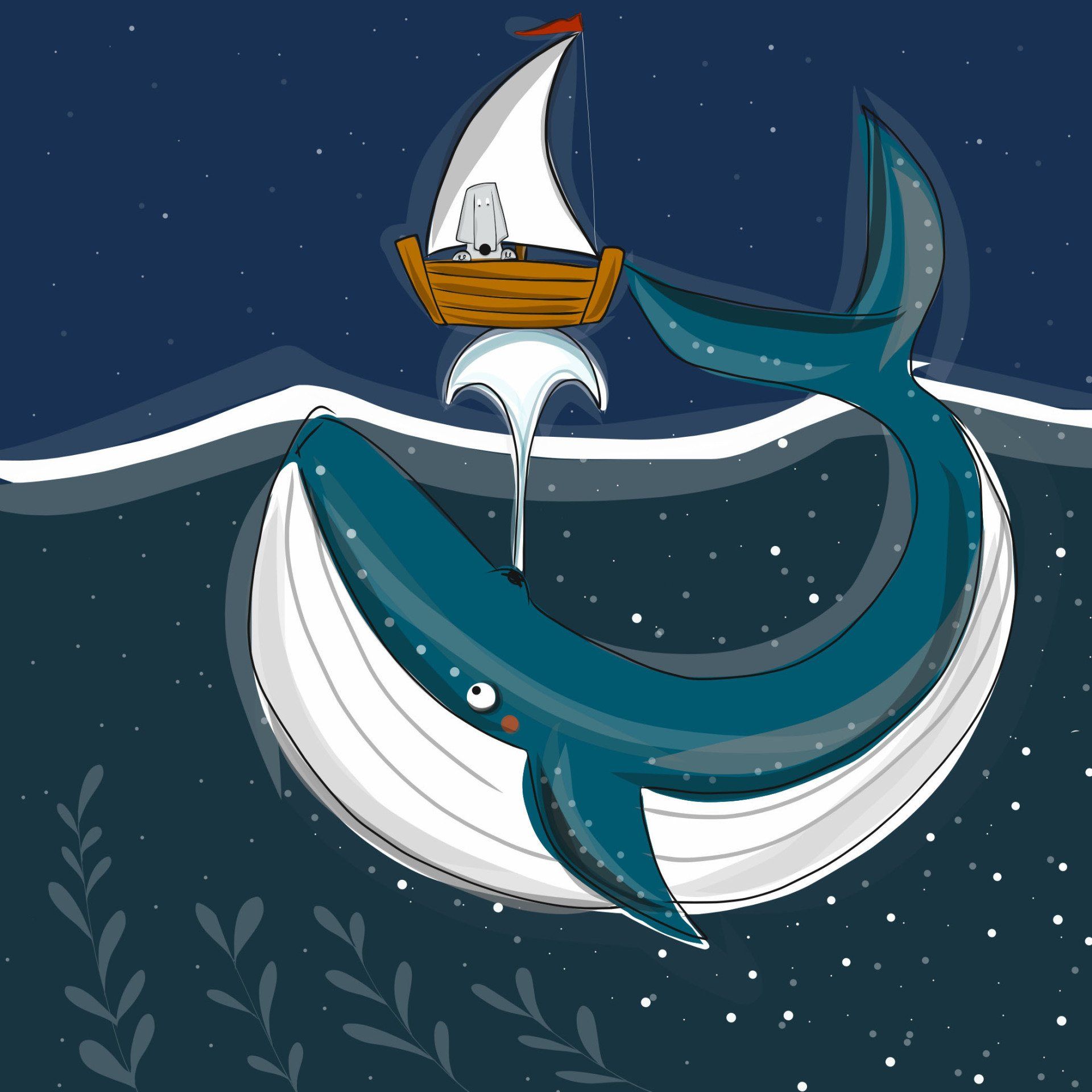
Sarah's work dominates the Yorkshire Cycle Hub - I first became aware of her work during a visit with my children when they brought back Sprocket colouring sheets to the table. Since then we've crossed paths many times, Sarah has traded at a number of Markets I've managed, ended up on the same photography course and at a creative connection network event. We regularly chat on Insta, so it only seemed right that Sarah and Sprocket were to be featured in an interview! Hi Sarah can you tell us a bit about you and and who Sprocket is? I'm Sarah and I love to draw, and I especially love to draw Sprocket the dog. Technically I'm his P.A and my job is to share his wonderful journeys with you all. I've been sharing my little dog's tales since 2015. I draw using an iPad Pro and with my finger, so it’s very free and flowing. I did my first 100-day project in 2015 and he was a product of that creative process. I have a lovely little studio in East Ayton and Sprocket was inspired by my old sidekick who was a Weimaraner, he was always up for walks and lots of cuddles. He had his own chair in my studio, I used to call him my supervisor. All my drawings are in honour of him. Being creative - is it something you’ve always gravitated towards? I've always been creative, spending a lot of time as a child making and drawing. Heading to uni to do a creative degree felt like the right direction to go in. I did Surface Pattern Design at Huddersfield and it was an intense journey but I learnt a lot about myself and how to be creative, developing ideas and definitely developed a thick skin with feedback from our tutors! I’ve always wanted to be in a creative job, looking back I never thought I would be doing this. I was somewhat clueless back in my early 20’s, I worked hard doing an unrelated 9-5 job and did my art on the side travelling to craft fairs and worked my way to eventually cutting down my day job. I exhibited three years in a row at Country Living Magazine show and Kirsty Allsop’s Handmade Fair in London . During lockdown you worked on a 100-day project on Instagram – did that help you stay creative and focused? Drawing Sprocket every day was a huge pleasure, it kept me focused and having an allocated time to draw each day was something I looked forward to. Just starting on a blank page, making lines that then flow into something I hadn't planned was a real treat. I haven't had that sort of time for my work since uni. Lockdown taught me how much I enjoy drawing and I loved giving myself that time every day to be creative. I'm so chuffed that people like the work I did and supported me by buying my work, it's always really heartwarming. I try not be mushy about it but my orders increased threefold over lockdown and everyday I'd just stand in my studio and beam with absolute joy . I spy you’ve been working in ceramic recently, is this a new medium for you to work with and is it something you'll be including in your shop for future (I hope so!) are there any other mediums you’d like to try out? I decided back in lockdown that I wanted to do something out of my comfort zone when we could all do stuff again. I love ceramics, and doing something so hands-on made me go back to basics so I messaged a friend who has a studio and I asked for lessons. Throwing pots is just brilliant, I love being so involved in the process and the need for me to concentrate and to switch off is just what I need. I'm so pleased with how they are looking and they seem to replicate my drawing style. I'm working on some Sprocket figures but hats off to artists that throw pots, it's a real art in its self.... . . and yes I’d love to be able to sell them in my shop so possibly! Where do you get your inspiration from? your images are so creative and brilliant, especially when you introduce new characters with Sprocket? That is a question!! I think I have an overactive brain, I do wonder where the ideas come from myself. I seem to go through stages of people requesting images, I do get complete artist block but then I have things that happen and they just inspire that drawing. I just like to try and tell a tale with each image. Does it take you long to design the images? do you plan what to feature or just go with the moment? I draw with my finger on my iPad pro, I call it freehand digital drawing. I try to set myself a bit of a limit of an hour and a half, some are quicker and some take forever but I actually am not aware of the time whilst I'm drawing in all honesty. I'm not a great planner but if I've got an idea I'll often write it down on a blank page in my adobe drawing app. Then it can be used at a later date.
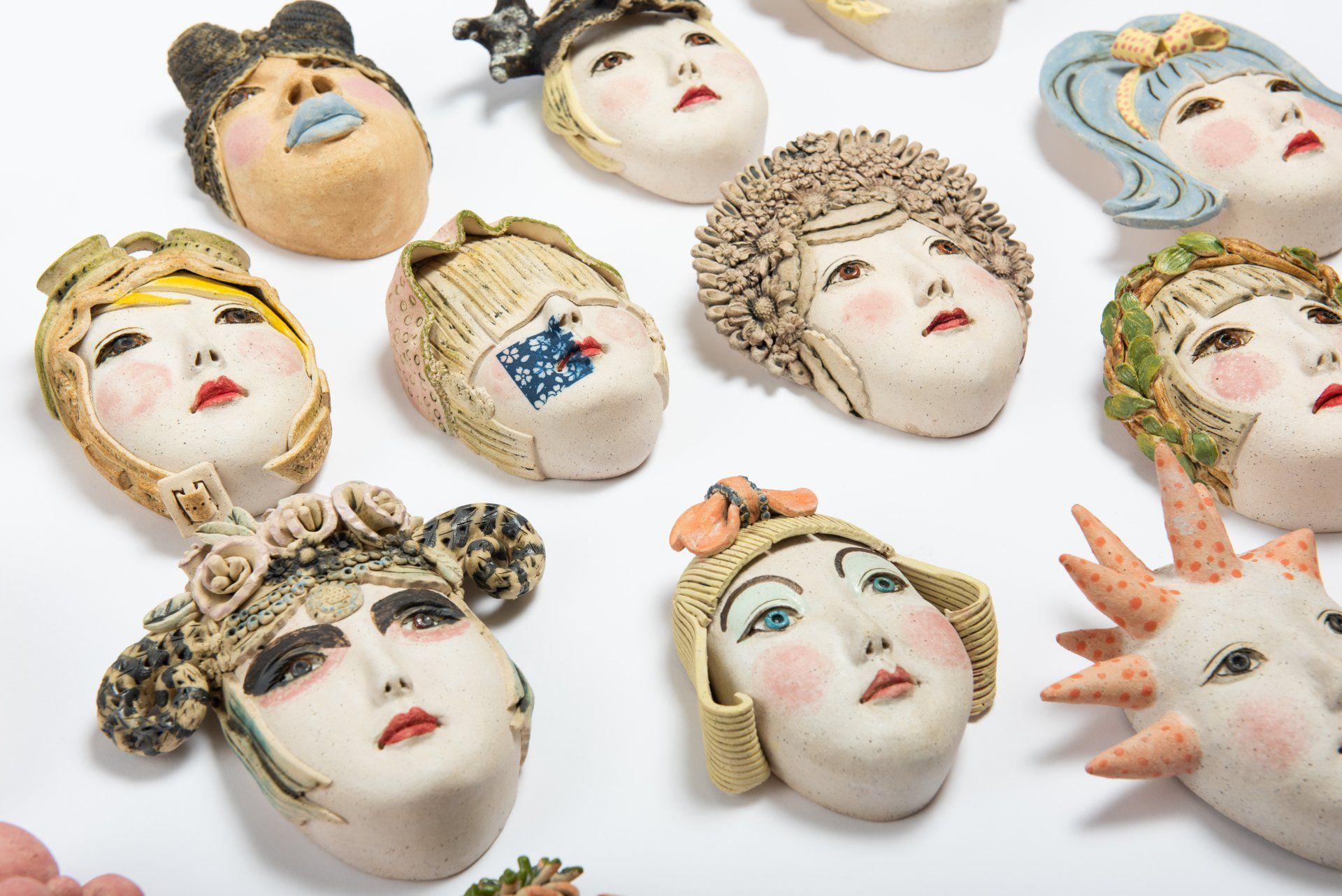
Born in Hong Kong Jenny Chan spent much of her childhood on the small island of Nauru, Micronesia, northeast of Australia but settled in the UK around five and a half years ago. Working with clay, her works are sculptural, primary about faces, making figurative figurines, wall masks and during 2020 she launched a new series of framed small faces wall art. "Not in wildest dreams did I think that I would be in the creative industry. I started my clay journey in 2014 during a very difficult time in my life. I am mostly self-taught from watching hours of YouTube. I found clay gave me focus, peace and fulfilment, the ideal distraction for relieving anxiety away from life difficulties and isolation as a new immigrant in the UK." Without any formal education in arts or ceramics, Jenny believes her love of 3D objects developed tinkering from an early age as the "handy woman" of the house! Without access to a kiln, Jenny then worked as a cleaner in exchange for free kiln firing time within a commercial studio - the Ceramic Studio in Stratford-upon-Avon. After then joining a local artist group, the Leamington Artists Studio, she realised her work was actually being very well received. Grappling with the latest technologies and a changing society after emerging from being a stay at home mum for 16 years was daunting but Jenny's confidence grew not just with her clay skills but within herself as a person during her time at Leamington. As a ceramicist her influencers include works from Rhian Malin , who Jenny observes has made such incredible achievements since 2016 - reaching from a great online presence to having her work heavily featured in many publications. Following a move to the North, Jenny was offered an opportunity in the Craft Council Hot House Programme in 2019 - a Yorkshire Artspace Starter Program which she feels was a pivotal moment for her work that did not centre around her age, ethnicity or educational background. Guiding her work has always been an inner focus on things that are important to Jenny - integrity, honesty and above all a woman trying to find peace and self-worth within. Using traditional hand-building techniques in coiling and slab building, each piece is unique and individually sculpted generally taking a number of days to perfect. No two pieces are the same and are made using mainly porcelain and stoneware clay. Some sculptures are partially press-moulded and individually carved whilst others sculpted from scratch. Any impressions and inlay surface decoration is made using a minimal glaze - coloured slips, oxides and underglazes, emphasising a natural clay texture and colour. Jenny's designs are very much guided by her surroundings of the day, something she may have read or seen on TV. The face mask series based on BBC100 women for example included some modelling on famous people, ie. Amelia Earhart, ‘Grayson Perry’ entwined with imaginary characters. During the March 2020 lockdown Jenny developed a new series ‘Standing Together’ (seen below) for NHS workers, a long-lasting recognition gift for their dedication to the Pandemic. Channelling her focus and anxiety around the Pandemic Jenny was able to make small framed wall art from modelling clay without the use of kiln firing. "If I cannot make work in the studio, I will use a shower plastic curtain on my carpeted floor to make work."
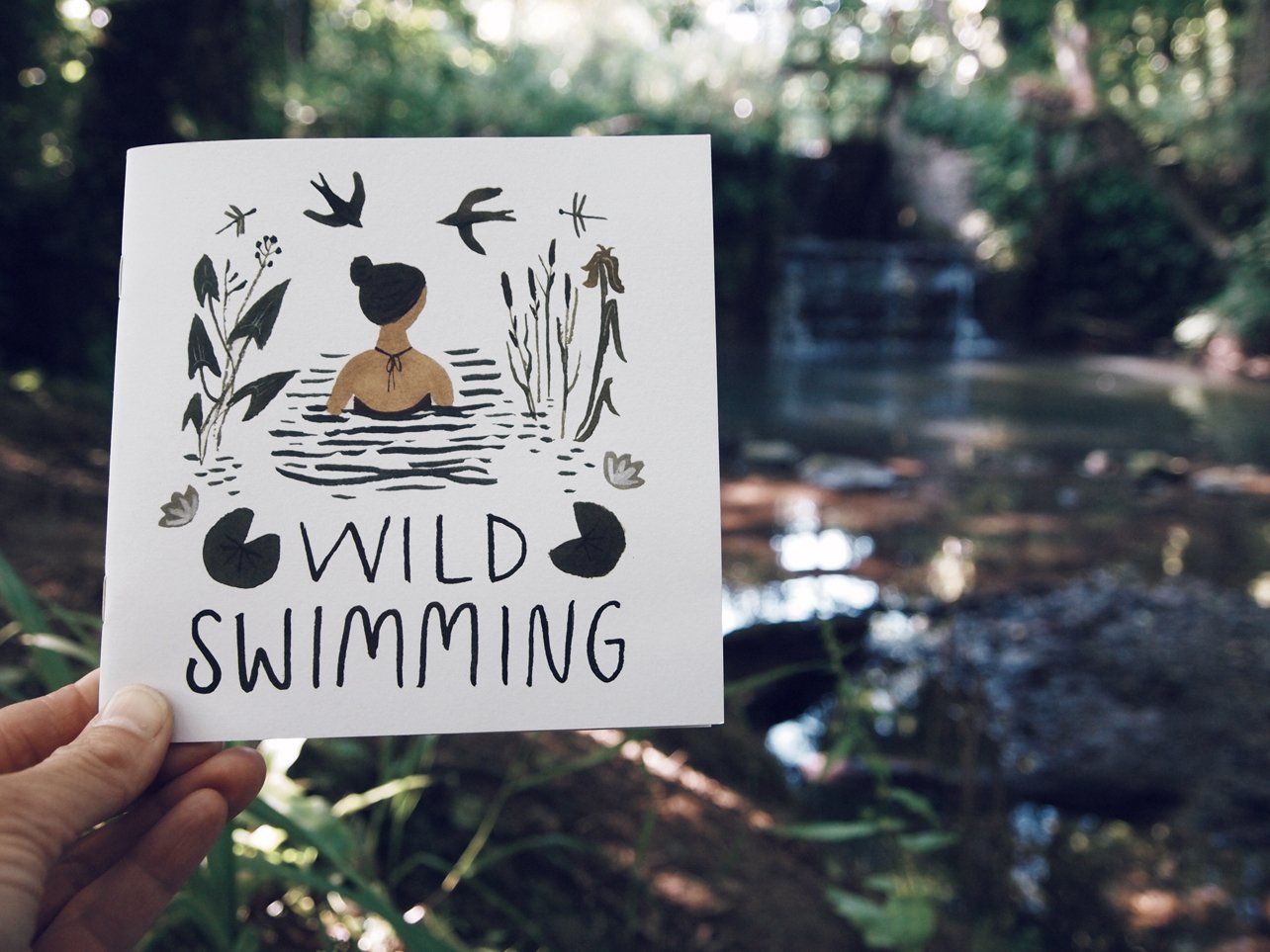
Specialising in the reproduction of Victorian Bird Roundels, Flora Jamieson ordinarily works in the wonderful world of glass. Designing from her beautiful studio in Dorset, she restores, reproduces and creates her own contemporary designs, whilst remaining faithful to traditional techniques. I chatted with Flora about how she pivoted from her normal glass creations to designing the most wonderful pocket sized guide to Wild Swimming... Let’s start at the beginning – you work with Stained Glass usually - can you tell me who you are (for anyone that doesn’t know) and how would you describe your work? Hello! I’m a stained glass artist based in Dorset. I make contemporary stained glass windows to commission, and I also restore and reproduce period stained glass. My own designs are inspired by the natural world: flora, fauna and the landscape around us; children’s book illustrations; 1960/70’s graphic design; wallpaper and fabric patterns. Tell me about your journey into the creative industry – was it an easy one and is it something you’ve always wanted to do? No it wasn't really something that was easy. I took art up to A-level, but didn’t pursue it further, and for a long time I regretted that. After university I moved to London and fell into a job as a studio administrator. Although I was working in really creative environments (firstly a design studio, followed by a photographic studio), the job I was doing was not creative at all, and I really missed working with my hands. In the end I decided to take an evening class to learn a craft or skill, and came across stained glass. I remembered visiting Salisbury Cathedral on a school art trip and visiting the stained glass workshop and thinking what an interesting job it looked, and that was it – I decided to go for it. If it’s a commission and not a restoration how long does the process take you from design to end result? When I’m working to commission, I like things to be as collaborative as possible, and clients often come to me with a list of ideas they want to include in the window. One of the parts of the process I enjoy the most is weaving these ideas into a visually pleasing design. I will usually set up a mood board on Pinterest and pool images there until I can feel something taking shape in terms of the concept. The next stage is to create some sketches of potential designs. Once I have something on paper that I feel is going in the right direction, I present it to the client to see what their thoughts are, and at this stage there is often a few tweaks until we arrive at the final concept. After that I will draw up the cartoon, which is the full size design, and once that is approved, glass cutting can begin. Once the glass is cut, I add the painted detail, which is then fired in the kiln for permanency. Lastly the glass pieces are fitted together with lead strips, soldered at the joints, and finally cemented (brushed all over with a runny black putty) to make it strong and waterp roo f.
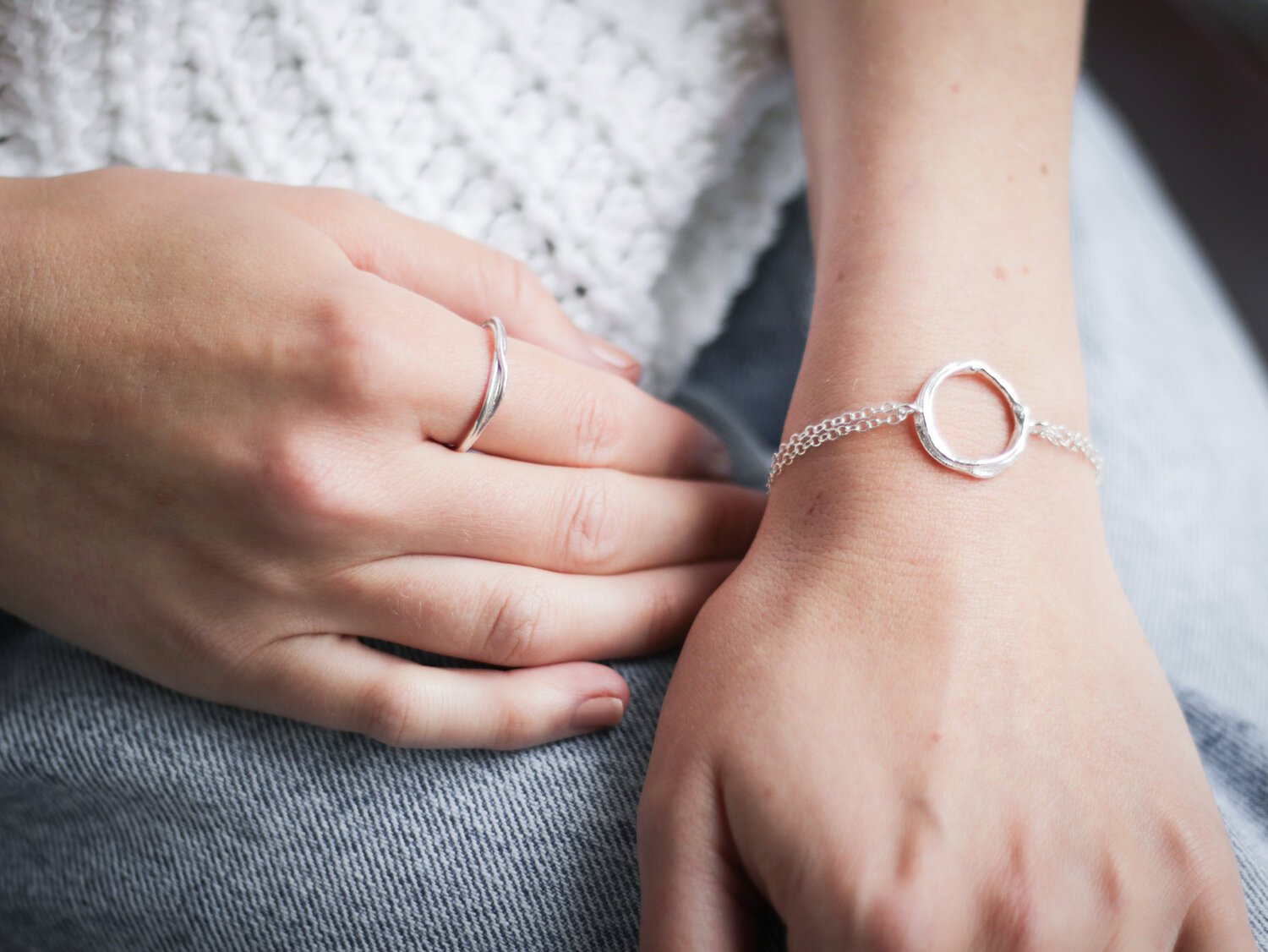
Hannah makes jewellery with a big heart! Delicate "everyday" designs that are a token of joy, adding that little bit of shine to the rhythms of life, with every single piece in the collections having an intention or story behind it. The ethos of her Hannah's business came from that ever striving need to be a thoughtful giver of gifts, the ones that people remember you for not, just rushing to Primarni for a token slogan mug. Hannah Weston Jewellery is a celebration of the stories that knit our lives together and connect us to our dearest family and friends. Family sits at the core of everything. One collection with heavy nordic influence is a nod to her brother who, with his family now reside in Norway. We've had many conversations about how running your own business has its own highs and lows (being a one man band can be a lonely place at times) but Hannah has gone from strength to strength and the last few years have seen her producing work for two pop up stints in John Lewis, a feature in Tatler magazine, a little spot in Holly Tuckers "fly the flag for small business" campaign (see the video here) and a move from juggling the business with a full time teaching job, to full time, self employed brilliant craftswoman and maker. I chatted with Hannah about how she came to be the founder of her own company and the journey she's been on get to where she is now. "I think my journey was a bit accidental… I never woke up one day and thought ‘oooh, I think I’d like to start a jewellery business’. I started making jewellery as a child – I was born with no fingers on one hand and went through a number of phases of trying to do everything one handed. The first phase was as a toddler, so my Mum would sit down at the dining room table with me and we’d string buttons on shirring elastic and make necklaces. I like being creative – making things with my hands. My Gran taught me to knit and embroider and make my own clothes. In 2013 my jewellery making got a bit more serious and I started to document my journey on social media – I gained a bit of a following and people started to ask me to make Christmas and Birthday presents. Then when I went back to work part time after having my daughter, my hours would fluctuate each year, giving me a bit more time to invest in my business – and I got to the point where I thought ‘you know what…. let’s give this a go, see if it can be a thing’ – I didn’t want to get to 60 having not tried."

Changing Times... Pre Coronacoaster there were approximately two million freelancers in the UK - can we just appreciate that number?! 1.77 million say freelancing is their main job and a further 241,000 have freelance work as part of their second job. Enlisting a freelancer can be daunting. Can you trust them to actually work? how much will they cost? If you do your research they can be invaluable to both your business and your finances. As a freelancer myself I've been thinking about this a lot and here's a few reasons in my opinion why I, and you, should support and collaborate with more self employed/freelance people - no matter if you're based in a large or small business. For my own work I've needed to call on other freelancers in the past such as web and graphic designers, copywriters (because sometimes it's just too hard to try and write about yourself!) but in addition collaborated as part of wider projects with photographers, stylists, branding folk, PR people - experts in their field. The biggest thing that motivates me and it strikes me that this is the baseline across the board for freelancers, is simple... "I want to do a blummin great job" If I don't do a great job my reputation is on the line. That is, in my mind one of the biggest assets (as well as their expertise) you will find in a freelancer. Freelancers live off their reputation. Motivated to do an excellent job and deliver results, often under pressure and to tight deadlines. Not because they’re superhuman, but because that’s how they (we) earn their (our) bread and butter. Plus in general people that start their own business and become freelancers are highly self-motivated anyway. What else? You pay for actual work - there might be a small element of faffing around putting the washing on, making coffee, but on the whole compared to a full-time employee, a freelancer saves you money on overheads, office space, equipment, training, sick & holiday pay and NI contributions. A freelancer will have a greater incentive to finish the work and be productive - according to research, the average employee in an office setting is only productive for less than 3 hours a day. Expertise If you research and find the right freelancer for the project or job at hand, their expertise will be highly specialised in that area. In your employees it's unlikely you will find a whole team that will have all the expertise you need nailed all the time. You might have someone that's a photographer in their spare time so can take a few good snaps now and again - but would their pics stand up for an editorial piece in a glossy mag? Probably not. (they are v. specific about how it should look!) You would need to invite a professional in. Freelancers specialise in an area - they've worked for various clients and collected a wide range of knowledge in their area. You might not need their expertise on a daily basis, but if you have a bank of trusted freelancers you can call upon when needed - invite them in, then their contract ends when the project ends. Instant If they've worked with you before (and want to again) freelancers hit the ground running. You give them a brief, agree the work and they don't need training - they got you! Ambitious employed professionals will move from one role to another, which for HR can be a nightmare - you spend 6 weeks invested in training someone, they stay for 3 months then move on to something else because they feel they've learnt enough. Waste.of.time. Freelancers are already experts. Location, Location, Location Looking for employees in your geographical location can often by limiting, recruiting for permanent positions can take months - especially if you work with trustees and executive boards that all need to be involved. The process for freelancers can sometimes be lengthy but mostly it can be done in days or weeks - if they are someone you use regularly it can be a matter of hours -particularly if it involves crisis management. Geographically the world is literally your oyster - you can work with anyone from anywhere in the world (depending on the nature of the work!) Flexibility Workloads fluctuate - they just do in any business. At any point in the year, staff members busy or not get the same pay. Working with freelancers gives you more leeway. You take them on when you need them, for project work, and extra support at capacity times. On the flip side as quickly as you take them on, if they don't live up to expectations you can sack them off (depending on the contract) pretty much immediately. Even if you pay a high fee for a freelancer the return on your investment will always be better. I absolutely have freelancers I call upon and am always looking for collaborations, because if they're anything like me they'll want to do a damn good job and I trust them, they are the experts in their field and when we collaborate together we achieve pretty amazing things. So that's why I think you should too!
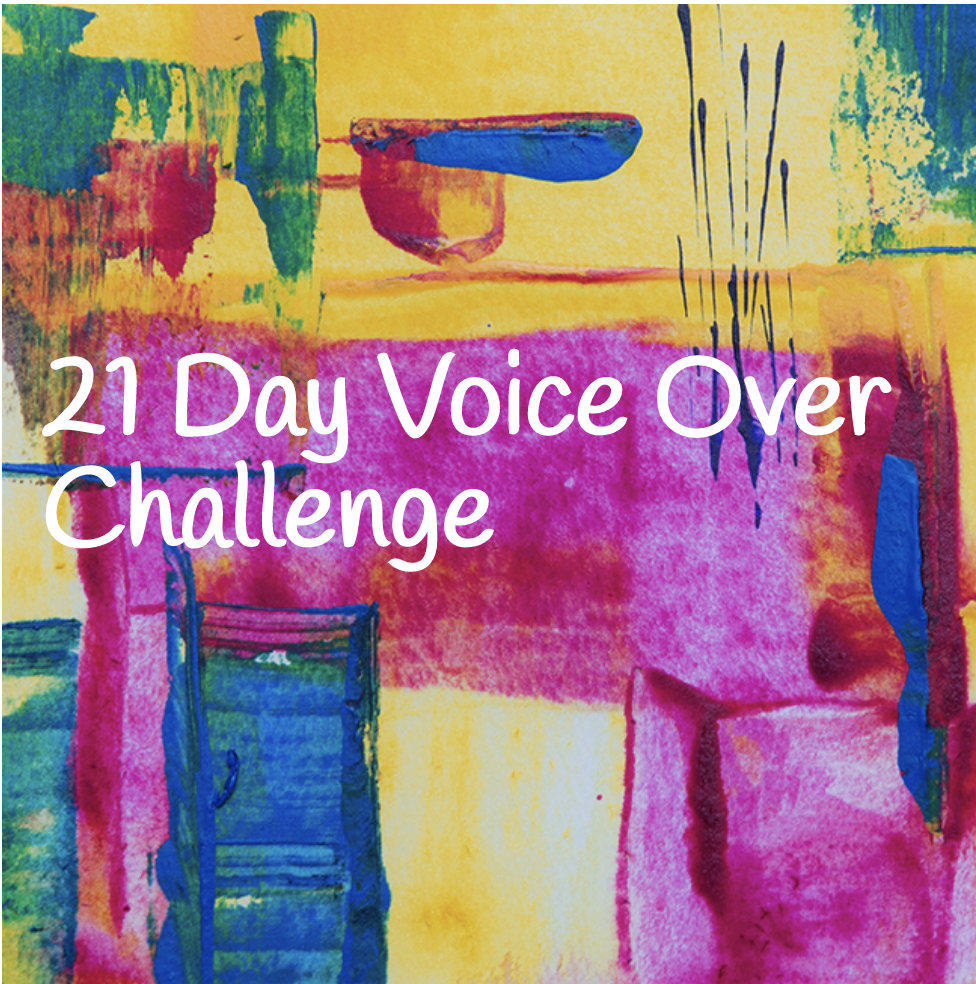
“It’s so hard when you can’t do the job you love, such as acting or performing - it defines us, so having a creative outlet for mental health is essential. Everyone is loving it and I am so grateful for the chance to share my knowledge and experience.” Creative Chameleon, Jo Pickard began her career as an actress, working on TV and Theatre in the North. Performing has always been a driving force for her, from the grand old age of 6 entertaining in her parents pub! After making the big move to London, Jo realised she was a small fish in a very huge pond, so retrained as a presenter and has never looked back! Although the journey has not been an easy one, with rejection and failure heavily playing their parts, it’s paved the way for a headstrong, focused and talented creative! Presenting at some of the biggest sporting events in the world, Jo has been the face of the London and Rio Olympic and Paralympic Games, two round the world Volvo Ocean Races, and hundreds of high-profile events in the UK, including Chris Evan’s Carfest and Tom Kerridge’s Pub in The Park. Realising she didn’t want to travel so much after meeting her husband and settling her roots back in the North, Jo refocused on an area she had always loved – Voice Over work. Now recording from her home studio, you’ll hear her tones across the likes of ITV, Channel 4 and five and currently cracking into the world of animation and gaming. When lockdown struck, Jo like many, lost 80% of her work pretty much overnight and the struggle of being home alone began to take its toll. With a farming husband out at work most the day, the large events industry and major international flights not looking to be normal anytime soon – Jo set her mind to creating something she could manage from home that would help others as well as keep her own mind active. With a firm focus of keeping busy, calls with friends to bounce around ideas and stay sane – the 21 Day Voice Over Challenge rocketed into life. The 21 Day Voice Over Challenge features loads of content to gain better understanding of the incredibly diverse voice over industry. It’s an opportunity to learn new skills, push yourself and get creative – even if you’ve never tried anything professionally. The challenges cover everything from audiobooks, gaming, animation but also scripts, tips and tricks along with positive quotes and encouragement to keep you going. So far the challenge has been a huge hit and has even had the likes of Liam Fox from Emmerdale and BGT finalist swing and rat pack singer Andrew Bourn taking part! Whilst its beginnings were a lockdown project, the 21 Day Voice Over Challenge isn’t going anywhere fast, Jo has plans to add to it and when we can a ll gather again properly - present some pop up workshops.
